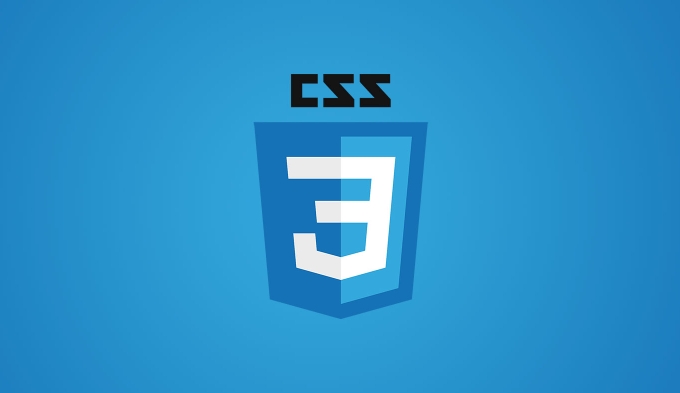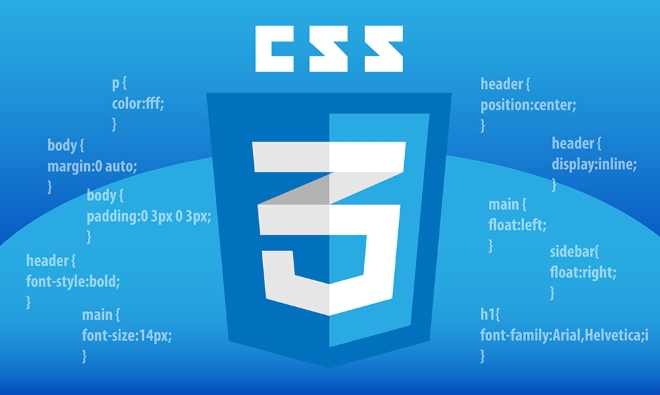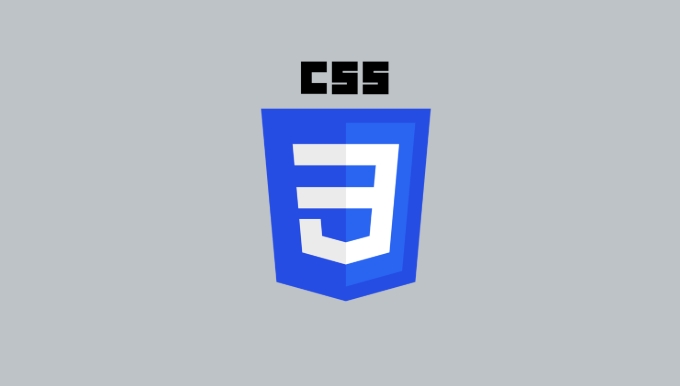Explain the CSS `content` property used with pseudo-elements
Jul 16, 2025 am 01:02 AMThe content attribute of CSS is mainly used for pseudo-elements such as ::before and ::after, which are used to insert generated content. 1. Support strings, URLs, counters, attribute values and Unicode characters; 2. ::before insert content at the beginning of the element, ::after at the end; 3. The display effect can be controlled through styles, such as color, font, background, etc.; 4. Note that empty strings still occupy space, use of escape characters, cannot insert HTML elements, and browser compatibility issues.

The CSS content property is mainly used with pseudo-elements like ::before and ::after . It allows you to insert generated content into the document without needing to modify the HTML. This can be handy for adding small visual touches or decorative elements directly through CSS.

Here's how it works and what you need to know when using it.
What You Can Put in the content Property
You're not limited to just plain text. The content property accepts several types of values:

- Strings (eg,
"Read more"): Most common use, wraps in quotes. - URLs (eg,
url(image.png)): Useful for inserting images. - Counter values (eg,
counter(section)): For auto-numbering sections. - Attribute values (eg,
attr(data-tooltip)): Pulls value from an HTML attribute. - Unicode characters (eg,
\2713): Used for symbols or icons.
Example:
p::after {
content: " ?";
}This adds a pencil emoji after every paragraph — simple but effective for visual cues.

When to Use ::before vs ::after
Both pseudo-elements work similarly with content , but their placement differences:
-
::beforeinserts content at the beginning of the selected element. -
::afterinserts content at the end .
Use ::before if you want to prepare something, like an icon before a link:
a::before {
content: "? ";
} Use ::after when appending, such as adding “(external)” after external links:
a.external::after {
content: " (external)";
} Just remember, pseudo-elements won't show up unless you set the content property — that's a common gotcha.
Styling Generated Content
Generated content behaves like inline elements by default, but you can style it like any other element. Common styles include:
- Setting
displaytoblockorinline-blockfor layout control. - Applying colors, fonts, spacing, or even background images.
- Using positioning (
absolute,relative) for precision placement.
For example, making a styled tag badge:
.tag::after {
content: "New!";
background: red;
color: white;
padding: 2px 5px;
border-radius: 3px;
font-size: 0.8em;
margin-left: 5px;
}It looks small, but these details make a difference visually.
A Few Things to Watch Out For
- Empty strings still take space : If you do
content: "", it technically creates something — useful for clearfixes or invisible spaces. - Escaped characters matter : Want to insert a quote? Use
\"inside the string. - Not all HTML is allowed : You can't insert real HTML elements via
content, only plain text or images. - Older browsers may behave differently : Especially around quotes and escaping — test where needed.
Also, don't forget to check that your pseudo-element has a valid selector and that you're not missing a colon ( : ) or semicolon ( ; ). Typos happen.
Basically that's it. Once you get the hang of it, the content property becomes a go-to tool for clean, lightweight enhancements.
The above is the detailed content of Explain the CSS `content` property used with pseudo-elements. For more information, please follow other related articles on the PHP Chinese website!

Hot AI Tools

Undress AI Tool
Undress images for free

Undresser.AI Undress
AI-powered app for creating realistic nude photos

AI Clothes Remover
Online AI tool for removing clothes from photos.

Clothoff.io
AI clothes remover

Video Face Swap
Swap faces in any video effortlessly with our completely free AI face swap tool!

Hot Article

Hot Tools

Notepad++7.3.1
Easy-to-use and free code editor

SublimeText3 Chinese version
Chinese version, very easy to use

Zend Studio 13.0.1
Powerful PHP integrated development environment

Dreamweaver CS6
Visual web development tools

SublimeText3 Mac version
God-level code editing software (SublimeText3)
 How to use PHP to build social sharing functions PHP sharing interface integration practice
Jul 25, 2025 pm 08:51 PM
How to use PHP to build social sharing functions PHP sharing interface integration practice
Jul 25, 2025 pm 08:51 PM
The core method of building social sharing functions in PHP is to dynamically generate sharing links that meet the requirements of each platform. 1. First get the current page or specified URL and article information; 2. Use urlencode to encode the parameters; 3. Splice and generate sharing links according to the protocols of each platform; 4. Display links on the front end for users to click and share; 5. Dynamically generate OG tags on the page to optimize sharing content display; 6. Be sure to escape user input to prevent XSS attacks. This method does not require complex authentication, has low maintenance costs, and is suitable for most content sharing needs.
 PHP creates a blog comment system to monetize PHP comment review and anti-brush strategy
Jul 25, 2025 pm 08:27 PM
PHP creates a blog comment system to monetize PHP comment review and anti-brush strategy
Jul 25, 2025 pm 08:27 PM
1. Maximizing the commercial value of the comment system requires combining native advertising precise delivery, user paid value-added services (such as uploading pictures, top-up comments), influence incentive mechanism based on comment quality, and compliance anonymous data insight monetization; 2. The audit strategy should adopt a combination of pre-audit dynamic keyword filtering and user reporting mechanisms, supplemented by comment quality rating to achieve content hierarchical exposure; 3. Anti-brushing requires the construction of multi-layer defense: reCAPTCHAv3 sensorless verification, Honeypot honeypot field recognition robot, IP and timestamp frequency limit prevents watering, and content pattern recognition marks suspicious comments, and continuously iterate to deal with attacks.
 What are common CSS browser inconsistencies?
Jul 26, 2025 am 07:04 AM
What are common CSS browser inconsistencies?
Jul 26, 2025 am 07:04 AM
Different browsers have differences in CSS parsing, resulting in inconsistent display effects, mainly including the default style difference, box model calculation method, Flexbox and Grid layout support level, and inconsistent behavior of certain CSS attributes. 1. The default style processing is inconsistent. The solution is to use CSSReset or Normalize.css to unify the initial style; 2. The box model calculation method of the old version of IE is different. It is recommended to use box-sizing:border-box in a unified manner; 3. Flexbox and Grid perform differently in edge cases or in old versions. More tests and use Autoprefixer; 4. Some CSS attribute behaviors are inconsistent. CanIuse must be consulted and downgraded.
 How to build a PHP Nginx environment with MacOS to configure the combination of Nginx and PHP services
Jul 25, 2025 pm 08:24 PM
How to build a PHP Nginx environment with MacOS to configure the combination of Nginx and PHP services
Jul 25, 2025 pm 08:24 PM
The core role of Homebrew in the construction of Mac environment is to simplify software installation and management. 1. Homebrew automatically handles dependencies and encapsulates complex compilation and installation processes into simple commands; 2. Provides a unified software package ecosystem to ensure the standardization of software installation location and configuration; 3. Integrates service management functions, and can easily start and stop services through brewservices; 4. Convenient software upgrade and maintenance, and improves system security and functionality.
 Describe the `vertical-align` property and its typical use cases
Jul 26, 2025 am 07:35 AM
Describe the `vertical-align` property and its typical use cases
Jul 26, 2025 am 07:35 AM
Thevertical-alignpropertyinCSSalignsinlineortable-cellelementsvertically.1.Itadjustselementslikeimagesorforminputswithintextlinesusingvalueslikebaseline,middle,super,andsub.2.Intablecells,itcontrolscontentalignmentwithtop,middle,orbottomvalues,oftenu
 What is the accent-color property?
Jul 26, 2025 am 09:25 AM
What is the accent-color property?
Jul 26, 2025 am 09:25 AM
accent-color is an attribute used in CSS to customize the highlight colors of form elements such as checkboxes, radio buttons and sliders; 1. It directly changes the default color of the selected state of the form control, such as changing the blue check mark of the checkbox to red; 2. Supported elements include input boxes of type="checkbox", type="radio" and type="range"; 3. Using accent-color can avoid complex custom styles and extra DOM structures, and maintain native accessibility; 4. It is generally supported by modern browsers, and old browsers need to be downgraded; 5. Set accent-col
 How to compile SCSS to CSS?
Jul 27, 2025 am 01:58 AM
How to compile SCSS to CSS?
Jul 27, 2025 am 01:58 AM
InstallDartSassvianpmafterinstallingNode.jsusingnpminstall-gsass.2.CompileSCSStoCSSusingthecommandsassinput.scssoutput.css.3.Usesass--watchinput.scssoutput.csstoauto-compileonsave.4.Watchentirefolderswithsass--watchscss:css.5.Usepartialswith_prefixfo
 How to change text color in CSS?
Jul 27, 2025 am 04:25 AM
How to change text color in CSS?
Jul 27, 2025 am 04:25 AM
To change the text color in CSS, you need to use the color attribute; 1. Use the color attribute to set the text foreground color, supporting color names (such as red), hexadecimal codes (such as #ff0000), RGB values (such as rgb(255,0,0)), HSL values (such as hsl(0,100%,50%)), and RGBA or HSLA with transparency (such as rgba(255,0,0,0.5)); 2. You can apply colors to any element containing text, such as h1 to h6 titles, paragraph p, link a (note the color settings of different states of a:link, a:visited, a:hover, a:active), buttons, div, span, etc.; 3. Most






